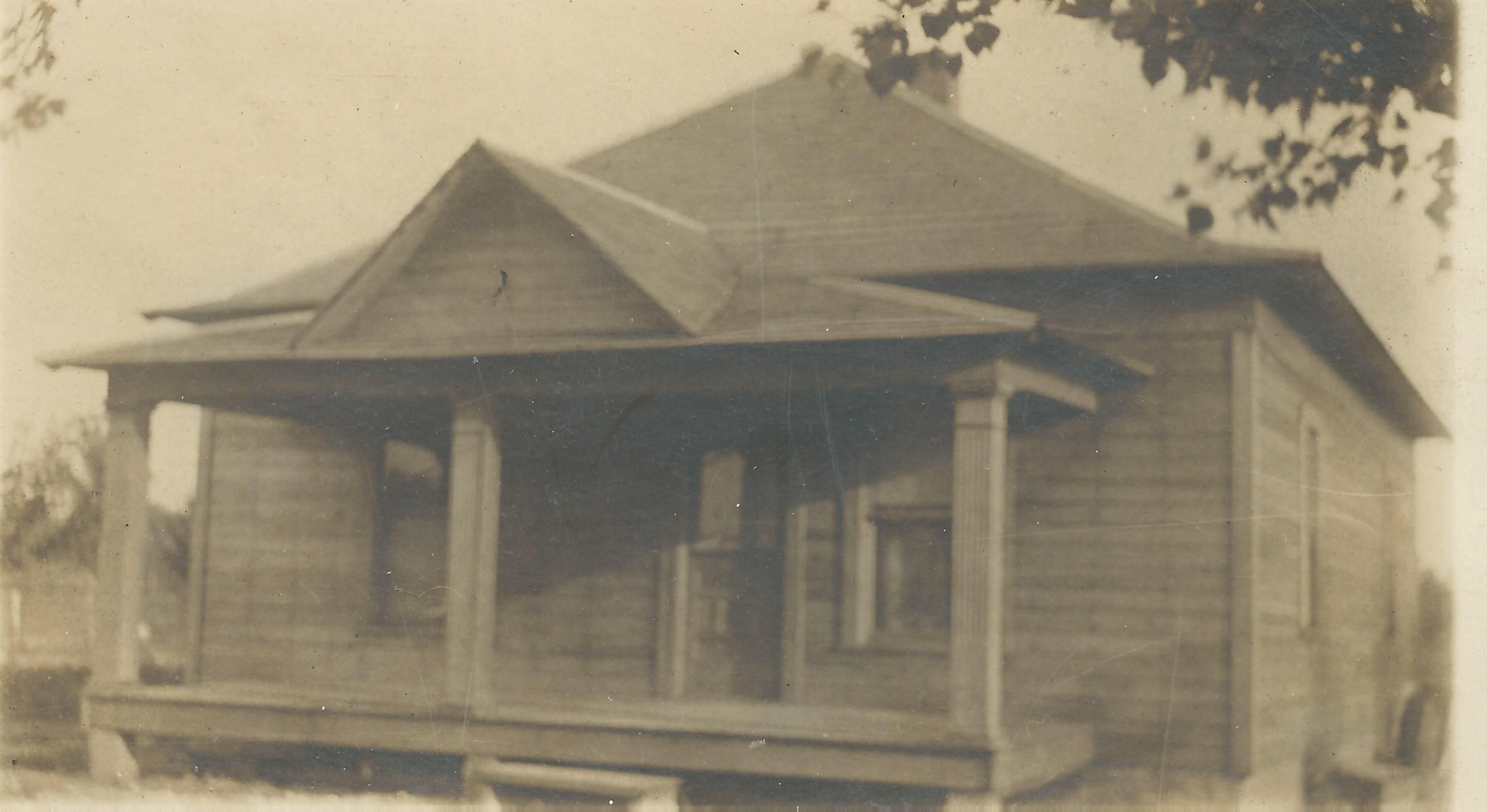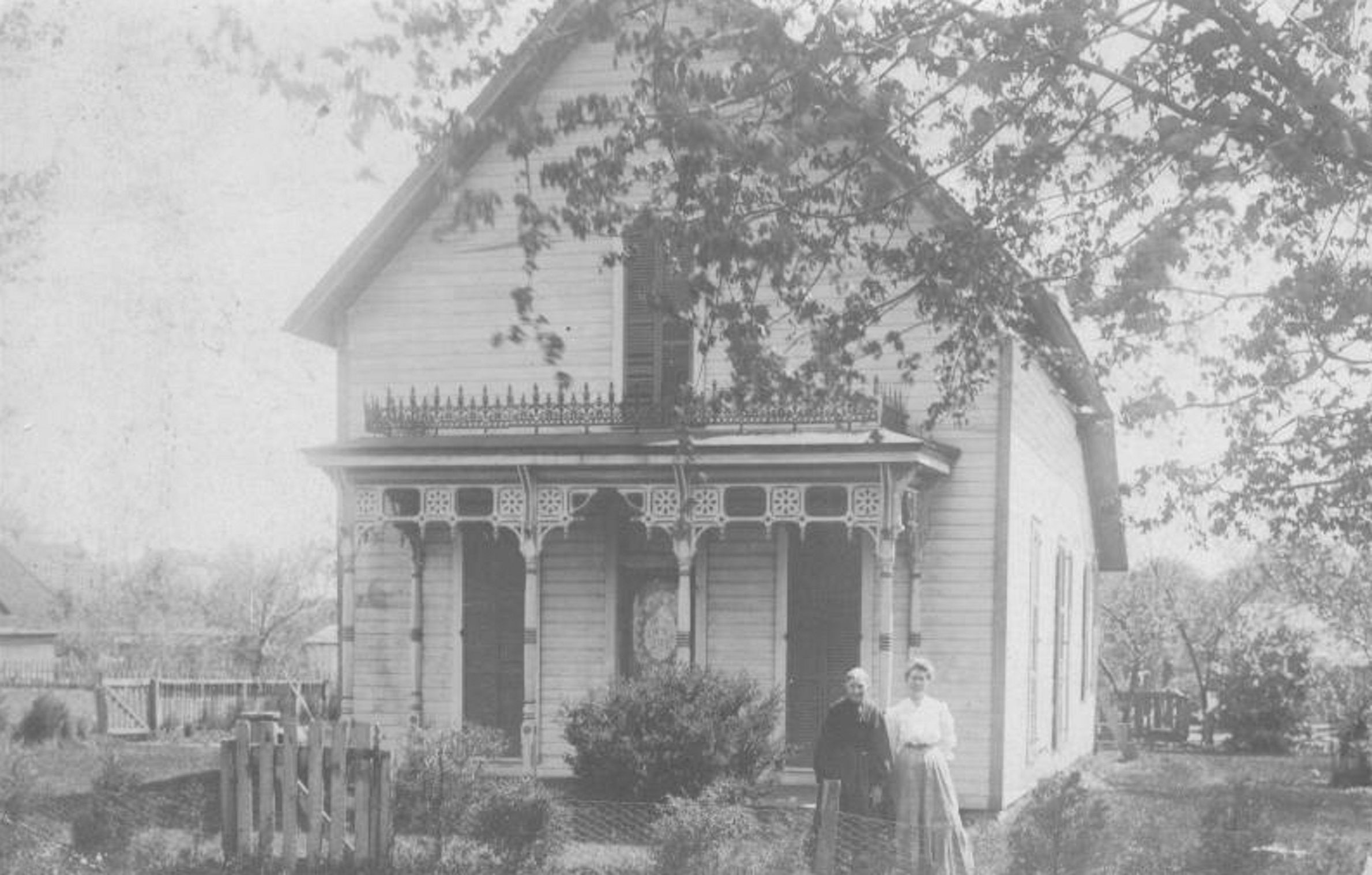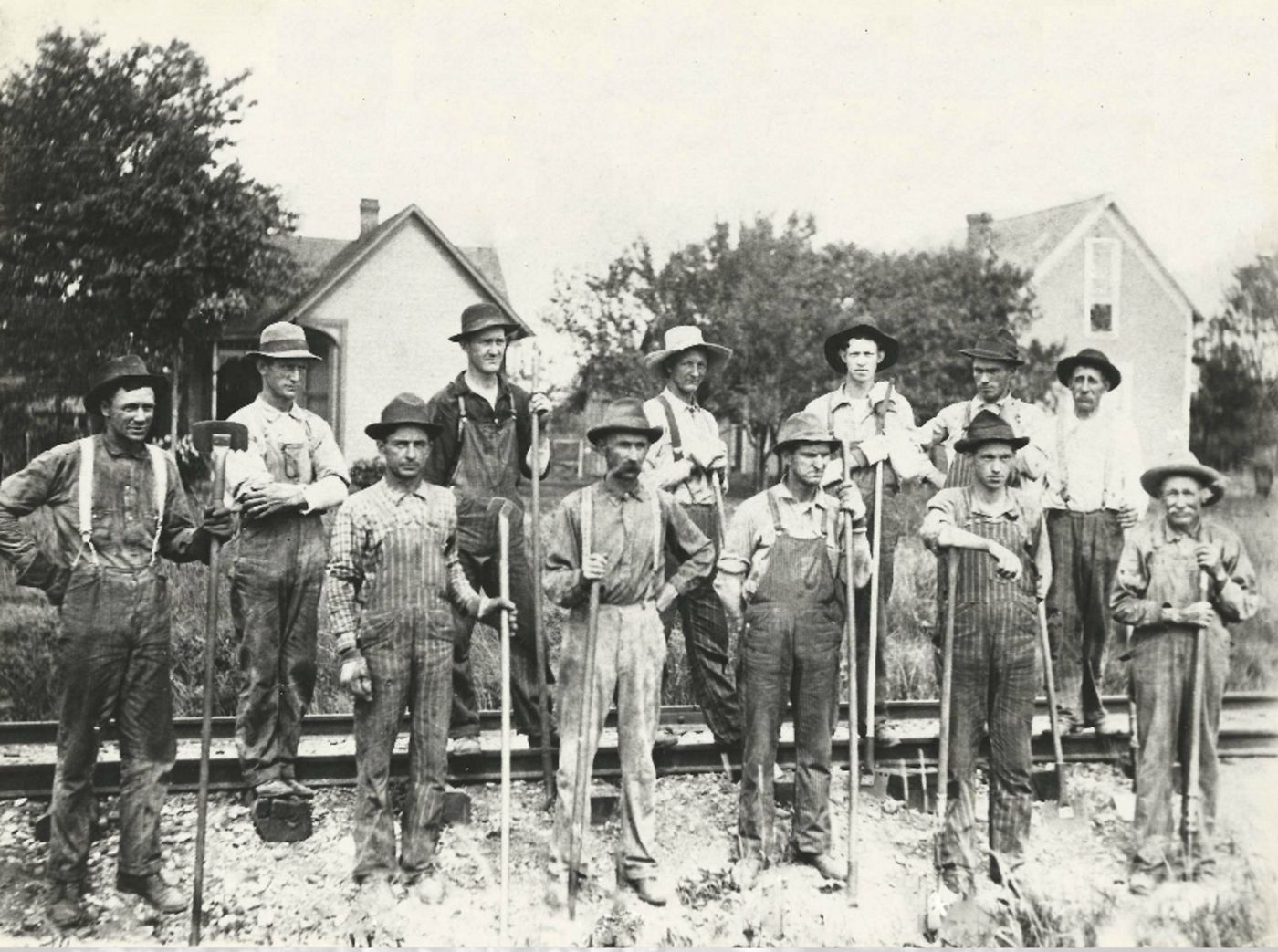
| 4 Jul 1891 - 17 Jan 1976 |
  The Old Ford Home in Miami County where Henry Ford came to visit. House is no longer standing. |
Ralph
Ford was born on July 4, 1891, in Miami County, Indiana to Balsora
Josephine Marshall, age 32, and Arnold Ford, age 44. He spent most of
his childhood in Deer Creek Township, Miami County, Indiana. Prior to 1917, Detroit Automaker Henry Ford would stop and visit at Arnold Ford and Balsora Marshall's home in Miami County where Ralph lived. While at the home, Arnold's son Ralph Ford would sit on the porch with Henry. Ralph worked at one of the auto places in Kokomo at the time. The two would share various stories and ideas. Henry would draw diagrams in the dirt using a stick while explaining them to Ralph. Arnold would go back in the house after a little while. Arnold always said that Henry was an "odd sort." Arnold probably found Henry to be odd due to the fact that he didn't understand all of the components of the automobile as Henry and Ralph did. Ralph Ford also worked on the Interurban railroad in Kokomo & Miami County for a time prior to WWI. Click on photo(s) for larger image
 The Ford Homestead in Miami County - 1909. House is no longer standing. |
Photos and biography written and submitted by Daniel Parvin, great-grandson of Ralph Ford. |
Upon
America entering the War in 1917, 26 year old Ralph enlisted in the
Army. On May 26, 1918, he departed for the front lines of France. His first stop was the St. Die Sector. He arrived on July 28, 1918. The lines of the St. Die Sector had been mostly enemy controlled since 1915. Deep trenches with the land between the trenches was dubbed, "no man's land" was controlled by the Germans. Due to their occupation of the highest ground in the sector, the peak of Ortomont, the Germans were able to place artillery fire on all portions of the front. Initiating a campaign of heavy patrolling. On August 17, 1918 Ralph Ford took part in the Battle of Frapelle in Lorraine, France. The Battle of Frapelle was the only large-scale operation in the Vosges mountains after 1915. The U.S. 5th Division captured the advantageously positioned village of Frapelle and held it despite multiple enemy counterattacks. First Lieutenant Josiah B. Mudge Jr. lead a company to it’s objective during this battle through a herd of enemy barrage and high-explosive gas shells. Although gassed and wounded, Mudge remained in command and held the ground. He was later awarded the Congressional Medal of Honor for the events of August 17. The Battle ended on August 20. From Frapelle, Ralph Ford returned to the St. Die Sector again. He remained there until September 1918. On September 12, 1918, He partook in the Battle of Saint Mihiel in Lorraine, France. The Battle of Saint-Mihiel was fought from 12-15 September 1918, involving the American Expeditionary Force and 48,000 French troops under the command of General John J. Pershing of the United States against German positions. The United States Army Air Service (which later became the United States Air Force) played a significant role in this action. This battle marked the first use of the terms "D-Day" and "H-Hour" by the Americans. The attack at the St. Mihiel was part of a plan by Pershing in which he hoped that the United States would break through the German lines and capture the fortified city of Metz. It was one of the first U.S. solo offensives in World War I and the attack caught the Germans in the process of retreating. This meant that their artillery were out of place and the American attack proved more successful than expected. Their strong blow increased their stature in the eyes of the French and British forces, but again demonstrated the critical role of artillery during World War I and the difficulty of supplying the massive World War I armies while they were on the move. The U.S. attack faltered as artillery and food supplies were left behind on the muddy roads. The attack on Metz was not realized, as the Germans refortified their positions and the Americans then turned their efforts to the Meuse-Argonne offensive. Ralph Ford entered the Puvenelle Sector on September 16, 1918. Puvenelle took it's name from the huge forest in the area. Puvenelle was by no means a simple task. There would be multiple skirmishes in this area. He would remain in the Puvenelle Sector until June 1919. Ralph returned to the United States on board the S.S. "Rotterdam" on July 22, 1919. Ralph Ford returned from the war at the age of 28 and received an Honorable Discharge from the United States Army on August 5, 1919. Ralph married Rella Marie Jacoby on March 16, 1920. He and Rella had three children. Donald Wayne (b: 1931), Mary Josephine Ford (b: 1934), and William Gene Ford (b: 1936). Emerson Bion lived with Ralph and his mother as well. Emerson was from Rella's previous marriage to Nicholas Bion. In 1959, Ralph retired from the Continental Steel Mill in Kokomo. Ralph Ford died on January 17, 1976, in Kokomo, Indiana at the age of 84. |



